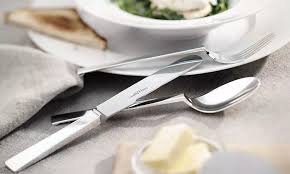Lead-Free Silverware: A Healthy Choice for Your Dining Experience

Introduction
In recent years, the concern over lead exposure from everyday items has led consumers to seek safer alternatives, especially in kitchenware and dining utensils. Lead-free silverware has emerged as a popular choice among health-conscious individuals, offering peace of mind without compromising on quality or aesthetics. This article explores the benefits of lead-free silverware, its manufacturing processes, and why it’s a prudent choice for modern households.
What is Lead-Free Silverware?
Lead-free silverware refers to flatware and utensils crafted without the use of lead in their composition. Traditionally, lead was added to metals to improve durability and malleability. However, extensive research has highlighted lead free silverware the health risks associated with lead exposure, particularly through items that come into direct contact with food and beverages. As a result, manufacturers have shifted towards safer materials and processes, ensuring that their products meet stringent safety standards.
Benefits of Lead-Free Silverware
- Health and Safety: The primary advantage of lead-free silverware is its non-toxic nature. Lead exposure can lead to serious health issues, especially in children and pregnant women. By opting for lead-free alternatives, consumers reduce the risk of ingestion and contamination.
- Environmental Impact: Lead-free manufacturing processes are often more environmentally friendly. They reduce the release of harmful substances into the environment during production and disposal phases, aligning with sustainable practices.
- Quality and Durability: Modern lead-free silverware maintains the high quality and durability associated with traditional silverware. Manufacturers utilize advanced alloys and techniques to ensure longevity and resistance to corrosion, offering a reliable dining experience.
Manufacturing Process
The production of lead-free silverware involves careful selection of metals and meticulous craftsmanship:
- Material Selection: Manufacturers use food-grade stainless steel, titanium, or other safe alloys that meet regulatory standards for lead content.
- Fabrication Techniques: Advanced manufacturing techniques such as precision casting or stamping are employed to shape and finish silverware pieces. These processes ensure uniformity and strength while eliminating the need for lead additives.
- Testing and Certification: Each batch of lead-free silverware undergoes rigorous testing to verify compliance with safety regulations. Certifications from reputable testing bodies provide assurance of quality and safety to consumers.
Why Choose Lead-Free Silverware?
In addition to health and safety considerations, lead-free silverware offers several practical benefits:
- Versatility: Lead-free silverware comes in a variety of designs and finishes, catering to different aesthetic preferences and dining occasions.
- Ease of Maintenance: These utensils are generally dishwasher-safe and easy to clean, maintaining their appearance and functionality over time.
- Peace of Mind: Choosing lead-free silverware allows consumers to enjoy meals with confidence, knowing that their utensils pose no risk of lead contamination.
Conclusion
The shift towards lead-free silverware reflects a growing awareness of health and environmental concerns among consumers. By opting for these safer alternatives, households can prioritize their well-being without sacrificing style or quality. As manufacturers continue to innovate and improve their practices, lead-free silverware remains a prudent choice for anyone looking to enhance their dining experience while prioritizing safety. Embracing this trend not only benefits individual health but also contributes to a safer and more sustainable future for all.



